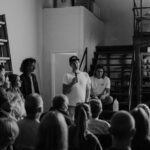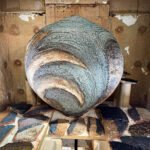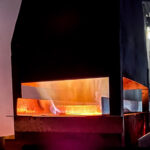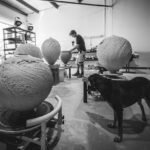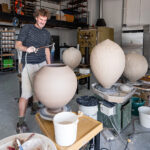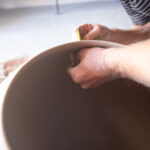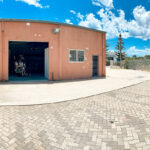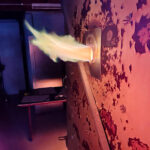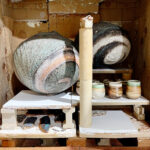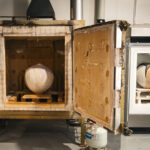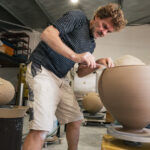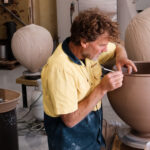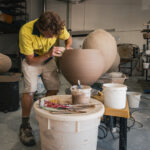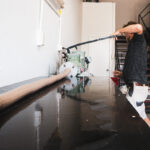In late 2022, I had the opportunity to purchase a small factory unit in the Yanchep light industrial area. This unit spans approximately 120 square metres, with an additional 20 square metre mezzanine floor.
The factory unit is part of a community of 10 units, used by local fishermen for storing and repairing their fishing gear, landscape gardeners, car restorers, and for general storage. It has a bit of a “men’s shed” vibe, or as we like to call it, a “Young Men’s Shed.” The complex is conveniently located just a 10-minute bike ride from my house, and my unit offers a view to the northeast, overlooking Tuart and Red Flowering Gum trees.
Upon acquiring the unit, I immediately began renovations to transform the space into a pottery and ceramic manufacturing studio. These updates included installing an industrial sink for glaze preparation, a new kitchen area with hot water, and repainting the walls from hospital green to a warm white. I also painted and sealed the floor with epoxy paint, which significantly freshened up the space. This allowed me to finally move my extensive collection of pottery equipment and machinery, accumulated over the last 40 or so years, from two sea containers into a single, cohesive studio.
I have installed three kilns: two electric and one 40-cubic-foot LPG-powered gas kiln. This setup has made the unit my second home and has proven to be an ideal space for my current work.
In my studio, I like to work on multiple potter’s wheels simultaneously, allowing pieces to dry a bit before adding more clay or glaze. The studio is equipped with six wheels, and I often have six pieces in progress at any given time when preparing for an exhibition. This approach helps me develop subtle variations between works, which is particularly useful for creating triptychs and harmonious groups in various sizes.
The two electric kilns, one a test kiln and the other around 16 cubic feet, along with the gas-fired kiln, offer a range of firing possibilities. I use the small electric kiln for testing glazes, the 16-cubic-foot electric kiln for bisque or glaze firing in an oxidizing atmosphere, and the gas kiln for reduction firing to cone 10.
Looking ahead, I intend to develop the studio into a pottery learning space and build an Olsen fast-fire wood-burning kiln to create a range of wood-fired domestic ware. It has been many years since I’ve made domestic ware, aside from a few coffee mugs for gifts, and I look forward to having the facilities to work on wood-fired, specialised ware in my own studio.


